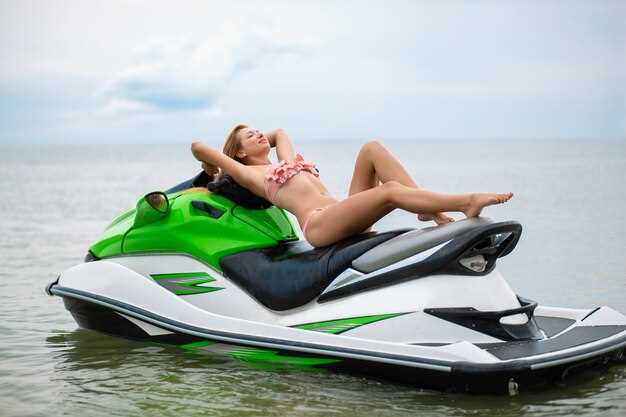
Whether you are a seasoned rider or a newcomer to the world of jet skiing, enhancing the performance of your watercraft is always an exciting prospect. Upgrading your jet ski can significantly transform your riding experience, allowing you to achieve greater speeds and improved agility on the water. This not only elevates the thrill but also enhances safety, making for a more enjoyable outing.
In this guide, we will explore various modifications and upgrades that can lead to substantial improvements in your jet ski’s overall performance. From engine enhancements to weight reduction techniques, there are numerous strategies to consider. Each upgrade has its specific benefits, and knowing which combination works best for your jet ski can unlock its full potential.
Moreover, understanding the mechanics behind these upgrades will help riders make informed decisions, ensuring they get the most from their jet skis. Whether you aim for faster straight-line speeds or tighter cornering, the right approach can make all the difference. Join us as we delve into the essential upgrades that will revitalize your jet skiing adventures.
Choosing the Right Propeller for Increased Performance

Selecting the appropriate propeller is crucial for enhancing your jet ski’s speed and agility. A well-matched propeller can significantly improve acceleration, top speed, and fuel efficiency. Here are key factors to consider when choosing a propeller:
- Diameter:
- The diameter of the propeller affects the amount of water displaced. A larger diameter can enable better acceleration, while a smaller one may improve top speed.
- Pitch:
- Pitch refers to the angle of the blades. A higher pitch offers greater top speed but can reduce acceleration. Conversely, a lower pitch improves acceleration at the expense of maximum speed.
- Material:
- Propellers are typically made from aluminum or stainless steel. Aluminum is lighter and less expensive, while stainless steel provides better durability and performance in high-speed conditions.
- Number of Blades:
- Most jet ski propellers have three or four blades. A three-blade design generally offers higher top speed, whereas a four-blade propeller enhances acceleration and handling.
- Cutting Edge Design:
- Shaped edges can impact efficiency. Look for designs that reduce drag and optimize water flow for better performance.
When selecting a propeller, it is essential to consider your specific riding style and intended use. For racing, opt for a higher pitch propeller for ultimate speed. For recreational riding, a lower pitch might provide more fun and quicker acceleration.
Before purchasing, consult with experienced riders or professionals to ensure compatibility with your jet ski model. Testing different propellers can also provide insights into what works best for your performance goals. Proper maintenance and occasional tuning can further enhance the efficiency of your chosen propeller.
Installing a High-Performance Exhaust System
Upgrading to a high-performance exhaust system can significantly enhance the speed and agility of your jet ski. This modification not only improves engine efficiency but also optimizes the overall performance of your watercraft.
Understanding the Benefits
A high-performance exhaust system allows for better exhaust flow, which reduces back pressure and increases engine output. This maximized airflow can lead to increased horsepower and acceleration. Additionally, these systems are often lighter than stock options, contributing to improved agility and handling.
Choosing the Right System
When selecting an exhaust system, consider materials and design. Stainless steel and titanium options are popular due to their durability and resistance to corrosion. Look for a design that complements your jet ski’s model and ensure it meets local noise regulations, as some performance systems can be quite loud.
Installation Process
Installing a high-performance exhaust system generally requires basic mechanical skills. Start by reviewing your jet ski’s service manual for specific instructions. Gather the necessary tools, including wrenches, sockets, and possibly a rubber mallet.
Begin by removing the stock exhaust system. This often involves disconnecting the exhaust manifold and any supporting brackets. Take care to collect all bolts and components for reuse or reference.
Next, position the new exhaust system, ensuring all mounting points align correctly. Secure it following the manufacturer’s guidelines, tightening bolts to the recommended torque specifications. It’s crucial to avoid overtightening, which can lead to damage or warping.
Testing and Tuning
After installation, conduct a thorough inspection for leaks and loose fittings. Start the engine and listen for any abnormal sounds. Allow the engine to reach operating temperature to ensure the new exhaust system functions correctly.
In some cases, tuning may be necessary to fully optimize performance. This could involve adjusting the fuel-to-air mixture or reprogramming the ECU. Consulting a professional or advanced tuning guide is advisable if you lack experience.
Conclusion
A high-performance exhaust system can dramatically enhance your jet ski’s speed and responsiveness. By carefully selecting the right system and properly installing it, you can significantly upgrade your watercraft for a more exhilarating ride.
Tuning Your Engine for Optimal Power Output
To maximize your jet ski’s performance, tuning your engine is essential. Start by adjusting the fuel mixture to achieve the ideal air-fuel ratio. Lean mixtures may boost speed, but they can cause engine damage if too extreme. Striking a balance ensures peak combustion efficiency and prolongs engine life.
Next, consider upgrading the carburetor or fuel injection system. More efficient airflow and fuel delivery can significantly enhance power output. If your jet ski uses a carburetor, upgrading to a high-performance model can improve throttle response and acceleration. For injected systems, fine-tuning the fuel maps can yield similar benefits.
Engine timing is another critical factor. Ignition timing affects how effectively the engine ignites the air-fuel mixture. Advancing the timing can increase output, but too much advancement may lead to knocking. It’s advisable to consult with performance tuning experts to find the right settings.
Additionally, upgrading the exhaust system can improve horsepower. A high-flow exhaust reduces back pressure, allowing exhaust gases to exit more efficiently. This change can free up horsepower and enhance the overall engine sound, adding to the performance experience.
Finally, regular maintenance is crucial. Ensure that spark plugs are in good condition, and the fuel filter is clean. Performing routine checks helps maintain optimal engine performance and power output, making your jet ski faster and more agile on the water.
Enhancing Hull Design for Improved Hydrodynamics
Enhancing the hull design of your jet ski is critical for achieving better speed and agility on the water. The shape and construction of the hull play a pivotal role in determining how efficiently your jet ski moves through water. A well-optimized hull can decrease drag and improve buoyancy, resulting in quicker acceleration and improved maneuverability.
Streamlined Shapes are essential for cutting through water with minimal resistance. Traditional hull designs can hinder performance, so consider opting for a V-shaped hull or a high-performance stepped hull. These designs allow water to flow more smoothly over the surface, reducing turbulence and enhancing lift. The sharper angles of a V-hull enable your jet ski to slice through waves, while a stepped hull can reduce drag by creating air pockets that assist in buoyancy.
Material selection is another crucial factor. Lightweight, sturdy materials such as fiberglass or carbon fiber can significantly reduce the overall weight of the hull, contributing to better speed. Additionally, a lighter hull will respond more quickly to steering inputs, offering improved agility.
Consider Stability as well. A wider hull base can provide better stability at high speeds without compromising performance. However, balance stability with sleekness; too wide a hull may increase drag. You may also want to experiment with adjustable trim tabs, which can help fine-tune your jet ski’s balance and hydrodynamics for different water conditions.
Surface Finish is equally important. A smooth hull surface minimizes friction between the water and the hull, further reducing drag. Regular maintenance and periodic polishing of the hull can keep it in optimal condition, enhancing its hydrodynamic properties.
Incorporating these design enhancements will help you upgrade your jet ski, allowing for improved performance on the water. By focusing on hydrodynamics, you ensure that your ride is not only faster but also more responsive and agile, making it capable of navigating various aquatic environments effectively.
Upgrading the Jet Ski’s Weight Distribution
Proper weight distribution on a jet ski is crucial for enhancing speed, agility, and overall performance. By adjusting the placement of passengers and gear, riders can significantly improve handling and stability on the water. Here are key considerations for optimizing weight distribution.
Firstly, it’s important to evenly distribute weight between the front and back of the jet ski. A balanced setup allows for sharper turns and reduces the risk of the nose rising excessively, which can hinder acceleration. Shifting more weight towards the rear can help in maximizing speed during straight runs, while moving weight forward enhances maneuverability.
Secondly, using specialized aftermarket products such as custom ballast bags can aid in fine-tuning weight distribution. These bags can be filled or emptied to adjust the jet ski’s balance based on riding conditions. For instance, more weight in the rear might benefit calm waters, while front-heavy setups are ideal for choppy seas.
Additionally, consider the placement of equipment and accessories. Heavy items should be stored lower in the hull and as close to the center as possible. Avoid placing unnecessary weight on the sides, as this can lead to uneven handling. Utilizing storage spaces wisely can make a noticeable difference in performance.
Finally, it’s essential to regularly assess your weight distribution setup during different riding conditions. Factors such as passenger load, gear type, and water surface can impact optimal weight placement. Making small adjustments based on these variables will lead to a more responsive and enjoyable ride.
Implementing Advanced Riding Techniques for Greater Agility
To enhance your jet ski’s agility, advanced riding techniques play a crucial role. Mastering these techniques will enable you to navigate tight turns and choppy waters more efficiently, thereby improving your overall riding experience.
Weight Distribution: Proper weight distribution is vital for maneuverability. Shift your body weight towards the handlebars during turns to enhance stability and control. Leaning into the turn can also help maintain speed while navigating corners.
Throttle Control: Learning to modulate the throttle is essential for agile riding. Applying throttle gradually while entering a turn allows for smoother transitions and prevents loss of control. Conversely, reducing throttle slightly can assist in tightening your turning radius.
Body Positioning: Keeping a low and centered position can significantly improve balance. Bend your knees and lower your body towards the jet ski to maintain a low center of gravity. This positioning enables quicker reactions to waves and sudden movements.
Look Ahead: Always keep your eyes focused on where you want to go, not just directly in front of you. Anticipating upcoming obstacles and turns allows for better decision-making and prepares you for necessary adjustments in speed and direction.
Practicing Countersteering: Countersteering involves briefly turning the handlebars in the opposite direction of the desired turn. This technique helps initiate a quicker lean into the turn, enhancing your cornering agility. Practice this technique in a safe environment to develop muscle memory.
Utilizing the Trim: Adjusting the trim of your jet ski can affect its handling characteristics. Experiment with trimming up to reduce drag in flat water or trim down to increase grip in choppy conditions. Understanding how trim affects your ride is key to mastering agility.
Incorporating these advanced riding techniques into your skill set will undoubtedly improve your jet ski’s agility, allowing for thrilling speeds and enhanced control on the water.

